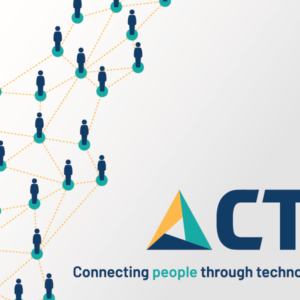AVNU Alliance Announces 802.1 Compatible Delivery Protocol
On Wednesday afternoon at InfoComm 2018, the AVNU Alliance held a small gathering on the second floor of the Las Vegas Convention Center. It was there that they took the next step in the process of making the AVB/TSN solution a more complete option for network based signal transmission. Many critics of using AVB in their projects have said that one drawback has been that there’s no application control software. Sure, if you are using one manufacturer’s product you can use their software and will get what you need. However, if you need a control software that allows you to view network routing and offer control across an entire system with multiple manufacturers, then AVB has been lacking.
The next step for the AVNU Alliance partners was to announce that they have created the protocol requirements to build the control software. That application layer standard is called Milan. It will require the same AVNU certification as any other product solution in order to maintain platform interoperability. With this addition, the potential for AVB/TSN to be at the heart of network ecosystems has just expanded significantly.
There are a handful of competing protocols that are vying four our attention and our dollars. The catch, of course, with competing protocols is that we have no guarantee that they will be able to operate with other platforms. For example, there are known instances of products that are capable of doing both AES67 and Dante. Using programming and configuration software, each device can be told to broadcast the signal using one protocol or the other. The issue that we continue to face in the audiovisual industry, though, is we are still striving to exist more cohesively on a corporate network and many of the protocols that we consider to be everyday standards are unfamiliar to the IT managers community.
As was discussed, at great length, during the Integrated Life Day sessions at InfoComm, one of the fundamental things required for truly flexible and interoperable solutions is to ensure that they are all abiding by the same standards. When we are working with multiple protocols, they will each meet their own standards but may not be able to cross platforms. When we’re dealing with attempting to integrate with building systems, we cannot assume that they will be working with a typical AV protocol or chipset. More often than not, we encounter building systems (HVAC, lighting, et al.) that are working with BACNet or BACNetIP. So, how do we move beyond the silos that have been constructed around separate industries to improve building integration? To answer that question, let’s look at what Milan really brings to the table when all is said and done.
It’s not just the audiovisual industry that shows up to the TSN conference offered by the AVNU Alliance. Manufacturing, automation, network engineers, and more have attended these conferences to discuss how an IEEE networking standard can benefit their businesses. When discussing with an IT manager what type of network signals the audiovisual hardware will be putting on their network, there is an incredible advantage to being able to drop an 802.1 standard on their desk as a response. It’s what they know and understand. It doesn’t come without its limitations (AVB switch gear required), but it makes the conversation significantly easier.
By having a standard that any manufacturer of any industry can adopt that doesn’t require a proprietary chipset, and then adding the application software to control any devices connected to that system, AVB/TSN is making itself capable of replacing BACNetIP and becoming the central platform for interoperability.
Networked audiovisual solutions are the way of things. Standing in one spot at InfoComm 2018, one could turn around 360 degrees and not be able to see a booth without an AVoIP product solution. It’s the way of the industry, now, to move the entire solution onto the network. There’s a myriad of reasons why that’s the case – ease of support, ease of signal distribution, ease of maintenance, using existing infrastructure, etc. – but one thing remains true to this networked evolution in that while we still may have not settled on a “best” way to transport signals on a network, the options are evolving quickly.
Recent comments
POPULAR
Audinate Introduces Dante Virtual Soundcard Pro for High-Performance Audio Applications
Audinate introduced Dante Virtual Soundcard Pro (DVS Pro), a software solution that enhances professional audio workflows with features like expanded channel capacity (128x128 channels at 96 kHz), virtual machine installation, advanced clocking, and flexible licensing options for Mac and Windows platforms.
 العربية
العربية 简体中文
简体中文 Nederlands
Nederlands English
English Français
Français Deutsch
Deutsch Italiano
Italiano Português
Português Русский
Русский Español
Español







